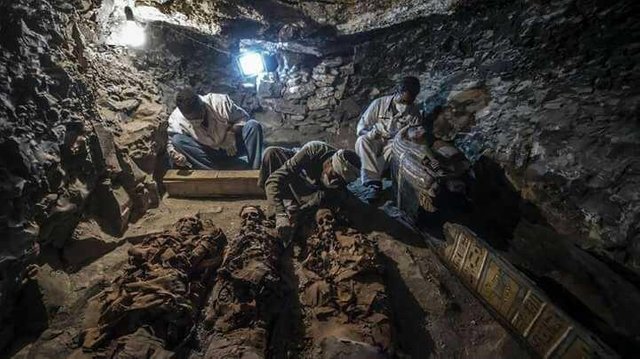
What is Archeology
Archeology is a challenging adventure and romantic intrigue as well as stunning scientific inquiry. It can be seen in hollywood production films and various news, even though excavations (excavations) are done on the sidewalks of the city center or in the middle of the fields, the adventure is still there because you are trying to make things that have not been known to be known . Finding by digging is not only looking for artifacts from antiquity but also a often dramatic story about how the lives of the human past. Maybe by drawing some lessons for the present.
Confusion and different concepts about archeology are natural things everywhere. We define archeology and show how a detective's work is on a grand scale. Here you will discover how archaeological sites are formed, how modern archeology is built, and how you yourself might do archaeological work all the time without realizing it!
So How Really Archeology is?
A simple definition: archeology is knowing the lives of the past by studying the material proof of its remains.
Archeology does not seem important to the man himself, but always tests his ability. Archeology differs greatly among all social sciences (the study of man and his life) having a unique method: studying humans not by seeing and reading or listening to them but by analyzing their material objects. Material objects are defined as belonging to people, their remains, and everything that looks and manifests - from the smallest beads or corn kernels to the highest pyramids, from very trivial kitchen waste to beautifully crafted golden crafts. Today when the ability to understand human hair and DNA as well as black stains and various features obtained from within the tomb, building and so on.
Method: Detective work
Archeology is identical to detective work-in fact, obviously a detective job! Many police or private detectives use all the methods that archaeologists use:
Be careful in measuring, recording, and photographing evidence of crime scene
Take pains to use accurate techniques to recover, process and analyze evidence.
Get background information on everyone, place and time involved
Interview what people know about events and other evidence they have and know
Using techniques from physics and chemistry to learn more about the evidence
Stop for a cup of coffee and eat a cold donut or beer at a small, closed place to see and think what else to look for.
Gather all the information and describe what happened
Stating your case and criticizing it sometimes involves other experts, politicians, journalists, and community members.
Continue the investigation if you can not attribute all the confusing things
Everyone sometimes does archaeological work.
Archaeological knowledge is about us. You can do archaeological work in the distant past or the recent past. Anyone who does archaeological work, maybe almost every day. For example, you may know a vehicle on the road to the house, or something scattered around a guest house that is a roommate, or children do there. Parents, especially those who do a lot of archaeological work (Have you brushed your teeth before going to sleep?
Purpose: Understanding About Man
When you do archaeological work, you do not dig just to get amazing artifacts (it is a treasure hunt or robbery). You do not really want the findings for yourself, however, they visit museum collections or exhibits for all the fun and learn more, if you are passionate. No, you want to understand the human past through what they leave above and on the ground (or anywhere). You check a glimpse of a lost trail from the past for some good reason. Archaeological objectives are:
Learn the human past across space and time
Reconstruct a past human life and habits of his life
Understand the cultural systems of the past (social, economic, political, religious) and how they change over time.
Help preserve the fragmented material recordings of the human past and interpret the remains for humans today.
Bringing people's past stories to society for fun, education and practical benefit other.
The Natural Proof of Archeology
Something human made is an artifact, including a thought, a song, or a smile. In archeology, artifacts are man-made objects of matter-you can see and measure them and obtain information from them.
Your material is all of the physical things you dig or gained in other ways from the archaeological site, and your data is all the pieces of information you get from the excavations, the sites and all the physical remains. Then you clean, sort, and identify your archaeological material in the laboratory. Then when you register each type of artifact and the ekofak in the table, you create the data. Just like all the information you record when you dig a feature or create a map-there's a lot of data, like all your notes, files, photos and other information. Follow the description section of all categories on this left.
Artifacts
Every object man made is an artifact. Usually you think of ancient ceramic pots or arrowheads, and finally all these items are everywhere in archaeological sites. But temples and palaces are an artifact too - something made on individual artefacts such as brick or stone blocks. Stones are used for hitting and other pieces of stone are made arrowheads which are also artifacts; Even though this is not formed freely. Object This surface is grinded and there are tatal marks and then modified by human activities. Finally, the stone chips that peel off when making stone tools, actually also include artifacts. Although they may or may not be discarded. More often, artifacts are moving objects of excavation and brought back to the laboratory for study.
Ekofak
Ekofak is an archaeological find that is classified as a natural object used by humans without modification. Animal bones and food scraps or pollen from garden plants are ekofak. But if a bone is formed into the tip of the eye of the spear, the modification makes it an artifact. Sometimes phosphates or other chemical elements in the soil are ecofacs that show that humans throw their organic waste to the soil surface.
Features
Something man-made but too big to lift (intak) to the lab is called a feature. Features can be garbage pits, foundations, mast holes of houses, cemeteries, roads, old building roof frameworks, foundation buildings, storage holes, place of origin artifacts, and footprints. Technically we can cut and take it for study in a better place like in the laboratory, but many features are excavated (or studied and then preserved) in the first time the feature is opened.
Site
Archaeological sites are places where human life or other activities are performed and places where artefacts, features and ecofacs are found all. You can find sites of different sizes, shapes and time periods. Start a small quarry with little pieces of stone scattered in the ruins of a large palace, until the pieces of stone blocks are scattered. Depending on the preservation, the site may be small or large, shallow or deep.
Components and Borders
When humans at any one time period use a place that people always use from the beginning of time, they add other components to a site. A multi component site (used over long periods of time with different cultural activities) at a preferred location such as a beach lined with thousands of years of cultural savings, one component overlaps with the other. The ideal site has something good, a sterile layer of culture between each of the parts you describe. The reality is rarely this kind of situation. Humans had previously come and dug the site and mixed older items with their belongings and never thought about how future archaeologists explain them all.
Not all sites can be viewed. Sometimes you do archaeological surveys on site sites, including using special techniques if left buried or under water. Searching for site boundaries is also sometimes complicated and may not be possible without digging.
Areas and Findings Isolated
You can investigate archaeological sites with whole natural areas, such as river valleys or islands. Or maybe do an archaeological survey in a project area's authority, such as a person's property boundary, in this case, you do your best to see how real archaeological sites are in the past, but you may never know for sure.
Each artifact is found one or two objects also sometimes called the site if it indicates a special activity there. But an arrow is not enough, the object may fall from a deer which is then carried away after being grounded. Criteria for qualification ication of a site may change according to the archaeologist who does the work and the project manual. Many professionals now record discrete isolated finds, or event artifacts to indicate something that happened in the past, if they do not have enough evidence to declare the place as a site.
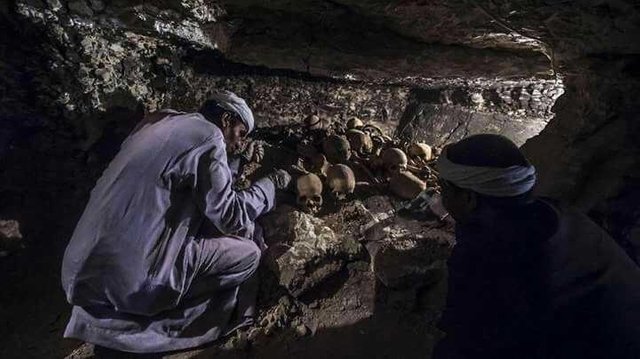

How to Form an Archeological Site
Archaeological sites can be built larger or smaller in amount of time and space, through large or small human and natural activities. Archaeologists say the process of site formation can be divided into 2 categories: Cultural processes and natural processes.
Cultural Process
The cultural activities that contribute to the establishment of archaeological sites are something simple that humans do that produce material evidence. Follow the list given to you some examples:
Seeking raw materials and making artifacts; making something from pieces of stone tools to make pyramids (waste of abandoned process)
Leaving evidence of activity; using material goods and physical space, moving around objects, leaving waste, repairing and rebuilding objects - essentially leaving traces and debris in an area where you show activity.
Throw things away (just leave or by accident): throw out the garbage, deliver the goods, or store the items and forget them.
Reusing goods in the past: taking part of the old pyramid and carrying blocks or bricks for use on new construction.
Digging or disturbing past objects that are underground: plowing the old site ground and bulldozing it to create a new construction.
Natural Process
Nature also has contributed to the establishment of archaeological sites. Types of natural processes:
Physical processes, such as wind, gravity, rain, storms, drought, volcanoes, and various climatic conditions and local weather conditions.
Biological processes, such as bird's nest on site and other bacteria or organisms that cause damage.
Chemical processes, such as weathering of rocks, rust, and decay of dead plants in soil acidity.
All of these processes affect the state of archaeological sites in their order and outlook. This situation can be on a large scale (ash of volcanic ash covering the whole city like Pompeii) or on a very small scale (rusted iron artifacts thoroughly). The other is more destructive (wooden buildings are completely destroyed and leave only black stains scattered on the ground), or actually preserves the site (Pompeii dust). Sometimes both can preserve and destroy in the same time. Examples of the effects of a flooded river, clearing all parts of a prehistoric river bank, but also closing another section up to several feet with new sand, then preserving it better (and making archaeologists have to dig deeper to find it).
You must understand the difference effect of all these processes as you do archaeological work. It helps know something about physical knowledge and becomes a good anthropologist who understands human life as well. In fact, being an archaeologist, you often need a balance in skill! If you are not ready, some fieldwork will help you see what indications of human soil use, what is meant by decomposing wood scattered on the surface of the soil, or how a large heavy orange object on a rusty artifact.
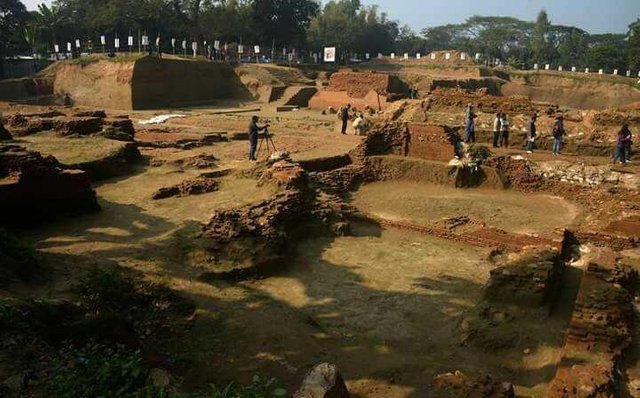
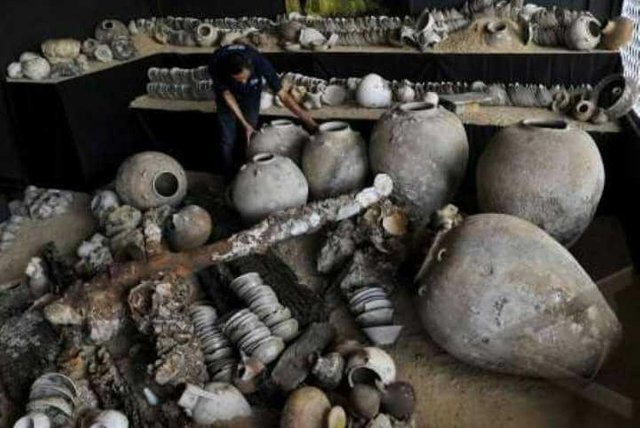
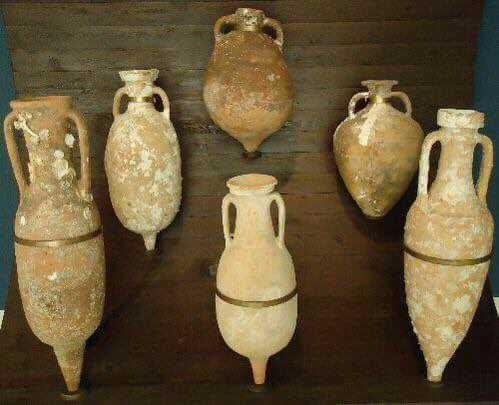
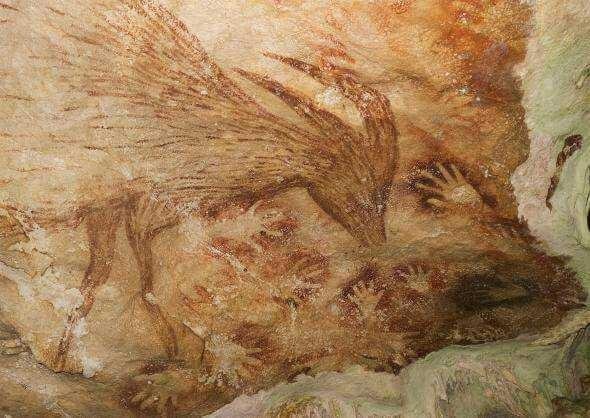
How Archeology Becomes Modern Knowledge
Archeology has a variety of surprising images and
Archeology has a variety of surprising images and findings that you do not get in Hollywood fiction films. Here I briefly repeat the history of archeology. Findings and adventures, and how the field develops in today's modern knowledge. Many famous, flamboyant, and fascinating personalities are pioneers in archeology development (model characters such as Indiana Jones). This is among the most favorite. Many of his biographies if you are interested in reading them further - you do not have to have the ability like Indiana Jones to do your own adventure!
Preliminary Diggers
Historical records say that in the 9th century BC Babylonian Kings and their first daughters performed their own remarkable excavations in the past, restored the archaeological artifacts of the Sumerian pyramids, and exhibited the artifacts found at the Palace. Historians in the past tell the tales and legends of the archaeological, and people may always dig these objects, especially to sell as souvenirs and treasures of the past glories of many people in many places.
But the real archeology can only be traced (farther) back in the Renaissance (14-17 AD), when the great desire to learn about the development of the classical period in long ago. Rich people travel to archaeological regions such as Egypt and Mesopotamia and collect antiques (old goods, usually statues) from excavations in ruins. Also, European collectors are exploring the monuments (Roman buildings, Stonehenge and others) on their own land. Antiquarian enthusiasts and collectors gathered goods and began to set up a museum to showcase it in the 18th century AD Pompeii was a coincidental discovery in late 1500, and the excavation was done in earnest from 1738.
Further knowledge of the human past to the modern period from historical writing or myth and legend to true science began to emerge in the western world. The Bible tells of people who happened in the past, folklore recounted at rest (fairy tale before bed). Beginning in 1500 AD, northern Europeans who discovered the stone age arrows called it a fairy shot or fairy arrow.
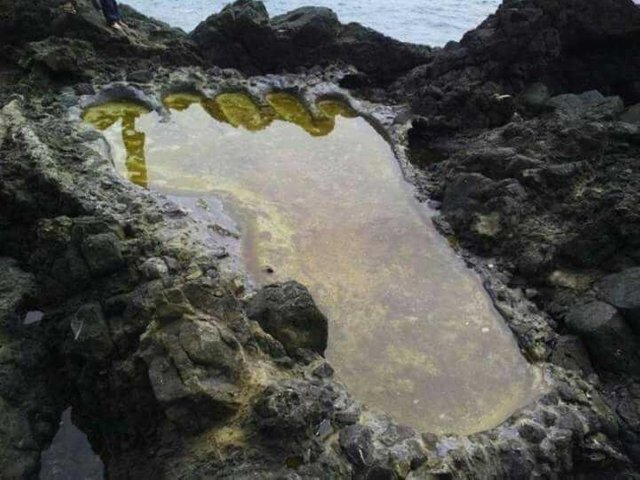
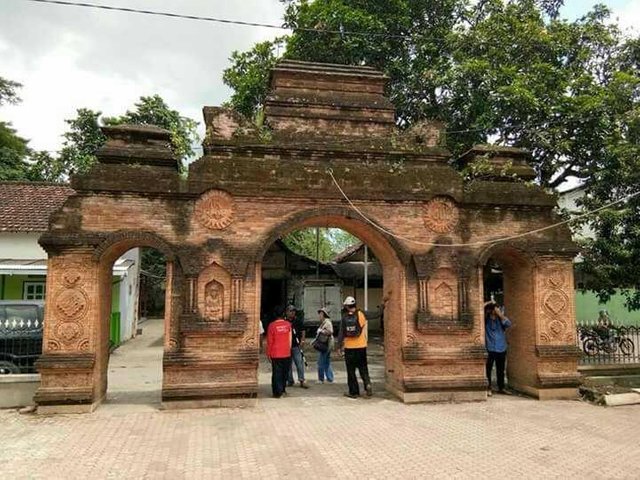
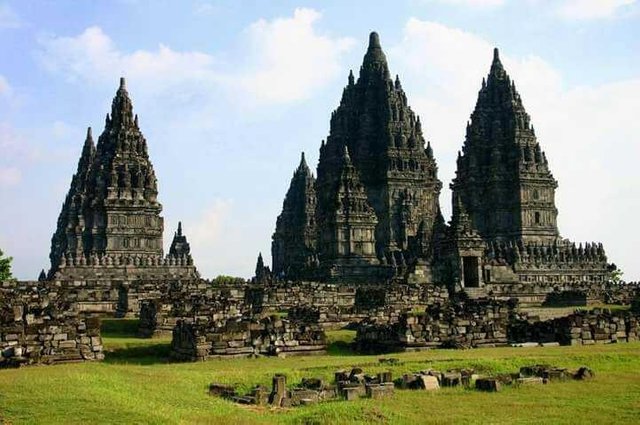
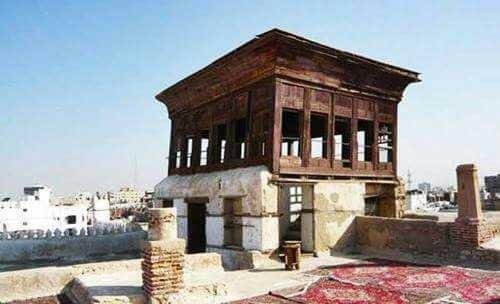
Archeology of the 19th Century
Beginning in early 1800 AD, early natural investigators and scientists collected beautifully shaped artifacts and archaeological knowledge and used them for the interpretation of past human beings in their neat habits. With historical models, they chart the progress of human society throughout the ages.
Early Classification
2 important things that the Danish do a major role in the early classification work. Christian Thomsen manages the findings at the National Museum and wants to showcase human achievements (apparently how to share arca displays requires their own capabilities). He chose the order of three ages: stone, bronze and iron. Jens Worsaae excavated the site and found that the stone tool was the deepest and the oldest; a bronze instrument was found on it, and the iron artifacts were above bronze; then, the Stone Age was split back into the Old Stone Age (Paleolithic) and the Stone Age (Neolithic); The deeper, older thinking eventually became known as the Law of Superposition.
This cultural classification became popular throughout Europe, and the term is still used today - by following the big differences, however:
- The single season falls under the different calendar years in different places.
- The "progress" of man and the "stage of development" is an unsuitable term because a universal trajectory on cultural development is absent; differences in cultural change become more or less complex through their own travel time.
- Archaeologists recognize that cultural classification is a pure and basic bias of technology, if only an important aspect of human development (denying art, literature, architecture, mathematics, religion, etc.). On the other hand, technology is more easily seen in archaeological recording!
Explorers, adventurers, and robbers
Many early archaeologists are amazing in terms of adventure and curiosity in searching for remaining and still beautiful artifacts on the past archeology. They are not sure to find different types of sites because local people always master them. But good archaeologists publish information and pictures and bring back the antique objects for display. More fools among them are fighting over ancient treasures for sale for profit or exhibited in their own homes. You may have heard of some famous people and their deeds;
- Together with Napoleon's invasion of 1798 to Egypt came scientists and artists documenting the remains of ancient civilizations. One thing to be found is the Rosetta Stone, with the date of Abab 2 before Christ. Texts in Greek and 2 in Egyptian. French scholar Champollion uses it for the translation of the ancient Egyptian writing system.
- Giovanni Belzoni was a strong man in the circus before becoming famous for exploiting his ancient Egyptian tomb robbery between 1817 and 1820. He blew, shifted, raised monuments of giant statues, mummies, and other relics to exhibit and store fame.
- Travel writer Jhon Lloyd Stephens and artist Frederick Catherwood studied and performed work on the amazing pyramids and other monuments of the Mayan civilization in Mexico and Central America in 1841 and 1843.
- Ephraim G. Squier and Edwin H. Davis surveyed the mounds of burial ground, dug the ground, and researched the temples in Mississippi and the Ohio Valley (1848) and published detailed descriptions widely.
- US President Thomas Jefferson excavated prehistoric mounds of American native graves on his property in Monticello, Virginia, with the aim of intellectual discovery of scientific detail (1788).
- Rich businessman Heinrich Schliemann thought of Homer's classic story of the Trojan War becoming a reality and went looking for and excavated Troy in northwestern Turkey (1871). Then he dug another site off Homer legend: Mycenae in Southern Greece, which may be the Fort of Agamemnon King.
Developments in the Late 19th Century and the Early 20th Century
The search for archaeological purposes became more sophisticated and scientific in the late 19th century AD since investigators realized the need for systematic learning to feel the wealth of findings. Here there are some figures recorded in the history of archeology when the development of prudent digging is done:
- General Pitt Rivers dug his country's land in the South of England in the 1880s, opening a mound of the Bronze Age grave, the Iron Age Fortress, and the Roman military camp. He carefully measured, drew and photographed his work and findings, laying the foundations of modern methods of archeology.
- Sir Flinder Petrie accurately surveys the Egyptian pyramids and excavates the tombs, mummies, and cemeteries with great precision. He devised a method to distinguish cultural chronology by examining changes in time-based artefact styles.
- Sir Arthur Evan excavated (and partially restored) the ruins of the palace at Knossos, the Greek island of Crete, beginning in 1900. His discovery brings the clarity of Minoan Civilizations (3000 - 1200 BC) that precedes the greatness of Mycenaean introduced by Heinrich Schliemann.
- Cyrus Thomas, head of the Smithsonian Institute for Mound Exploration Division, collected information on thousands of bumps and seized them crazily, especially in the Mississippi Valley of the United States. He thought of the mound built by a disappeared man, but his findings changed his mind, he reported in 1894 that the real mound was made by the ancestors of various native groups of America.
The Beginning of the 20th Century: Amazing Findings and Academic Quality Improvement
Sensational findings and more diverse figures continue to make a stunning discovery early in the 20th century. Archaeologists make more neat excavations, and synthesize the results more easily during that period.
Famous Early Characters
You may think of archeology as a leisure-filler for the rich, there is time for travel, and many types of British colonial employees are investigating the past with the intention of generating varied interest during the early 1900's. On the side there are some character figures:
- Howard Carter, is a man who works with Flinders Petrie in Egypt, financed by Carnarvon nobles to explore the Valley of the Kings. He found King Tut's spectacular Mausoleum, an unimportant Pharaoh crab whose grave is known for not being robbed like any other, so it still looks rich in splendor.
- Sir Leonard Woolley excavated in Syria in 1912, assisted by T.E. Lawrence (Lawrence of Arabia), with whom he also engages spying activities for the British government. After World War I, he excavated the famous Messopotamian City in Ur Iraq and for 50 years wrote 10 daily report volumes of brick-and-mortar mud houses and the king's tomb filled with gold, silver and other treasures.
- Getrude Bell, an English-language travel writer and a dazzling political figure in the Middle East. Investigate the Mesopotamian ruins and also be involved in the British Secret Service. He organized the Department of Archeology and the Museum of Iraq, and assisted in the emergence of the modern state of Iraq
- Gertrude Caton-Thompson, worked in Egypt and excavated in Greater Zimbabwe in Southern Africa in 1929. He said that the ruins were made by indigenous Africans, a view which the previous colonial government had been against the law until investigators finally proved the truth.
- Sir Mortimer wheeler was the head of English archeology in the 1920s. He followed and improved the more sophisticated excavation techniques pioneered by Pitt Rivers and dug a diverse site, from the Roman City to the Famous Iron Age of Maiden Castle Castle in the South of England. Then he went to India and brought the clarity of the Ancient Cities in the Indus Valley Civilization lost in Pakistan. He became a public figure and a good initial television personality; many think that he is a living model of Indiana Jones.
Archeology Leads More Academic
Scholars argue that archaeological primary objectives should be to manage the vast amounts of excavation information available. V. Gordon Childe, an Australian who investigates cross-European archeology, produced the first major synthesis of Prehistory. He says that the process of change in the human past begins from the agricultural revolution and the Urban revolution - in other words, the production of food and then the initial formation of power. Some of his works include "The Danube in Prehistory" (1929), "New Light on the Most Ancient East" (1934), and the most famous is "Man Makes Himself" (1939).
In the beginning 20th century many fossils were discovered which show that the first human beginning came from Africa into truth. Many of these studies do not use archeological logic, but the subject of human paleontology or paleoanthropology. But the famous Louis Leakey went to Olduvai Gorge in Tanzania to look for early human evidence because he saw a piece of stone tool that looked still rough there, so he thought it was the earliest stone tool.
During the Depression (Malaise) in the 1930s, United States President Franklin Roosevelt started a program to make work for the country, including a major agreement on archaeological work, particularly in the impoverished southern region. Hundreds of mounds or other sites were dug and thousands of artifacts were found and piles of data were collected. Then academic institutions begin to train archaeologists who supervise the work and then synthesize findings in large areas. They use cultural archeological naming (usually based on pottery type or artifact characteristics) and time periods (duplicates) for managing information and relaying past stories, a period of time thereafter. This descriptive approach is called the History of Culture (when attention is prehistoric or pre-written), archaeologists continue to use this approach until now, surely, but more than just a simple description.
Initial Developments in the Interpretation of the Past
Many antiquarian seekers in the 19th century studied past relics paying attention to stone tools with animal bones formed, demonstrating the greatness of ancient human objects. They noticed that the American natives still made arrowheads of stone, as easy as comparison with cutting stone tools where in the world saw the work of human hands. Geologist Sir Charles Lyell demonstrates the period of the earth-forming and how the same process is still going on today (the principle of Uniformitarianism). Charles Darwin used the developmental knowledge of the Systematic Scientific theory of Evolution, calculated the development of all life forms (On The Origins of Species in 1859), then extended the explanation of further human development.
New Archeology in the mid-20th century
After World War II, some of the latest intellectuals gathered to influence the mini revolution in archeology. Technological developments in wartime combined with the development of more scientific desires. Some archaeologists are disappointed with the simple description found and where (resulting in cultural history). They want to understand how the cultural function of the past and answer the question of how human systems are managed. Their movement started what is called New Archeology.
Here are some things that affect, among others:
- New technologies such as aerial photography and computers
- Other scientific breakthroughs such as Radio Carbon Dating.
- The development of concern on Civil Rights, Human Rights and the Environment.
- The development of attention on the Preservation of History and the Loss of Archaeological Sites due to the development and development or practical needs of new agriculture.
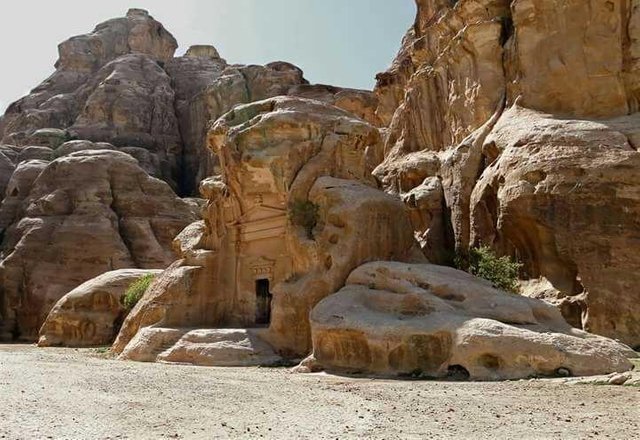
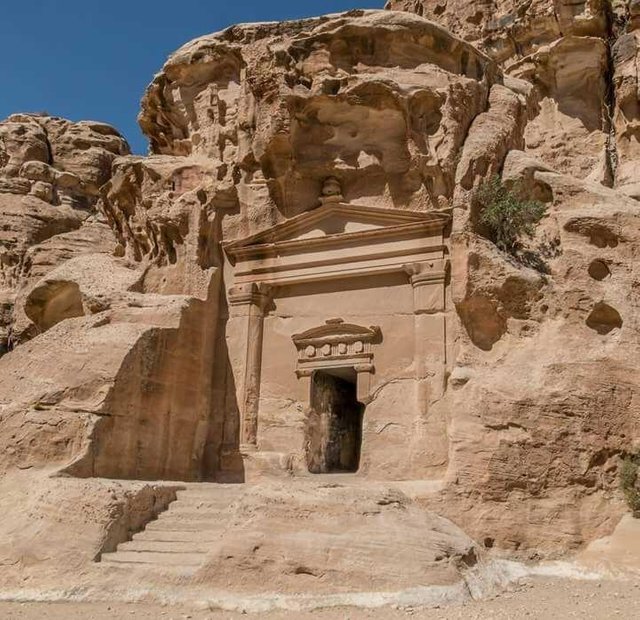
Archeology End of the 20th Century
After New Archeology developed for 2 decades, archaeologists decided that they did not mention the new farther and began using the term Processual Archeology, because of the method of investigating the cultural process. The more archaeological do the current archeological processes.
Certainly, every action will elicit a reaction, an archeological scholarly response in the 1980s that is considered too ethnocentric or biased in the more dominant cultural tastes (which dominate it) and forget the human story and the meaning of the past. This response is more of a humanist (somewhat arbitrary) archeological approach called Post Processual Archeology; Postprocessual archaeology contributes to modern practice and its assessment makes you understand how to know what you know about archaeological data recording.
Modern 21st Century Archeology
Today you combine cultural history descriptions with a scientific approach and awareness of bias that may be found in your researcher. We must be fully conscious of the heritage issue, using politics in archeology (arguing one's land claims, for example), and conservation of resources (or historic preservation-preserving the sites and monuments of destruction ).
Many laws established in the late 20th century AD now protect archaeological remains throughout the world both on land and in the oceans. They also generalize that archaeological research is a necessity in construction and construction work. Many new techniques and more accurate methods may be interpreted as spending time filling out forms and other work papers (or computer) more than digging. But it is all worth because you also have the pride of discovery.
Field Archeology
Fieldwork has always been a special tradition in archeology, regardless of what type you do. You go out and find traces of the past (archaeological surveys) and dig them (excavations), and, yes, may face explorations. But you also realize far from the ethical and security considerations of more days than historical figures described earlier in the session this. Who moves into other countries and hires locals to dig large trenches that sometimes break down.
Since you think more about everything and plan for modern archeology, a description of all the stages of fieldwork should be completed, from the research design and the list of supplies and supplies brought to the strategy in determining where it will be extracted and the careful procedures for excavation which are very small additions . I show you how to record everything you do and find out what you are compensating for by excavating the value of your new information about past human life.
Archeology at the Laboratory
The greatest part of archaeological work is what you do after excavation: the process, analysis, and nurturing that you find and for all the information about the past you collect. In overcoming what the number of abundant manpower and responsibility. All the stages of the laboratory work, from time to time bring a dirty artefact basket to prepare your final report. A good laboratory should list many ways we can analyze artifacts and describe them with amazing pieces of information about the author and its users. You can see how to put the pieces together and use theoretical orientation differences to tell the story of the past in different ways.
The Story of Archeology Man
Alloys a collection of knowledge from centuries of investigation, archeology provides you with a story about the entire human past on this planet. I relate this story to you, show how the findings of material and sites have been researched that indicate what humans do for many couples over millions of years (and sometimes why!). New excavations and new scientific methods merge into archeology bringing a detailed, detailed life of our prehistoric ancestors who move around the great ice-hunting game landscape, reside after the ice age and grow crops, and discover a real civilization in many places over several thousand years ago. This great step in human life makes a huge change of society and a serious consequence for us today. During times of history, when you write recordings of what men do and think, archeology - the trace of matter - shows you many things you did not know before about your ancestors and yourself.
Archeology in Public Environment
The greatest change movement in the 21st century is the awareness that everything about archeology is for public archeology. Jobs that are usually paid by the public / society, and the discovery of part of the whole human inheritance. Archeology departs from a fun hobby or a rich human quest to become a scientific method to understand human life in the long run.
You can walk with a famous footstep and sometimes as an unknown character who pioneered excavation methods and gained sensational excavations. But today you also realize that archeology finds the real state. Not only is it important in the world of professional archeology and the interpretation of living systems and human activities, but it also has meaning in the wider world of the greatness of humanity.
In a message that shows you about the importance of archeology to the general public and why you care about it. The explanation of the political and social relationships in today's archeology, including past human relationships for grandchildren's life and preservation of archaeological sites and ancient objects of robbery, all remain for everyone. I noted some of the last controversies in the field and how you compete for interpretation but also the practical usefulness of studying the past. Say also enroll some paths that you can participate in archeology and bring you ready to gain experience. This paper is a thin layer rich with information, then dig deeper!
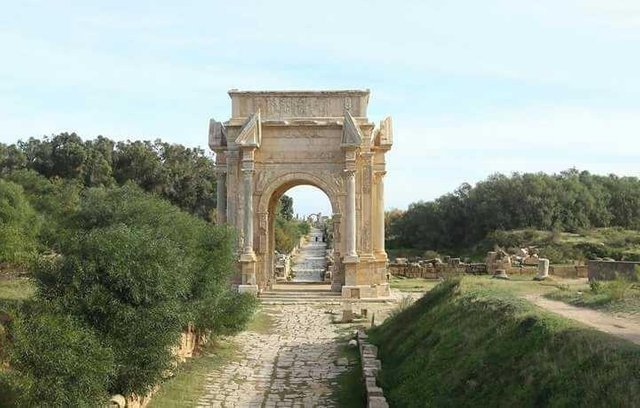
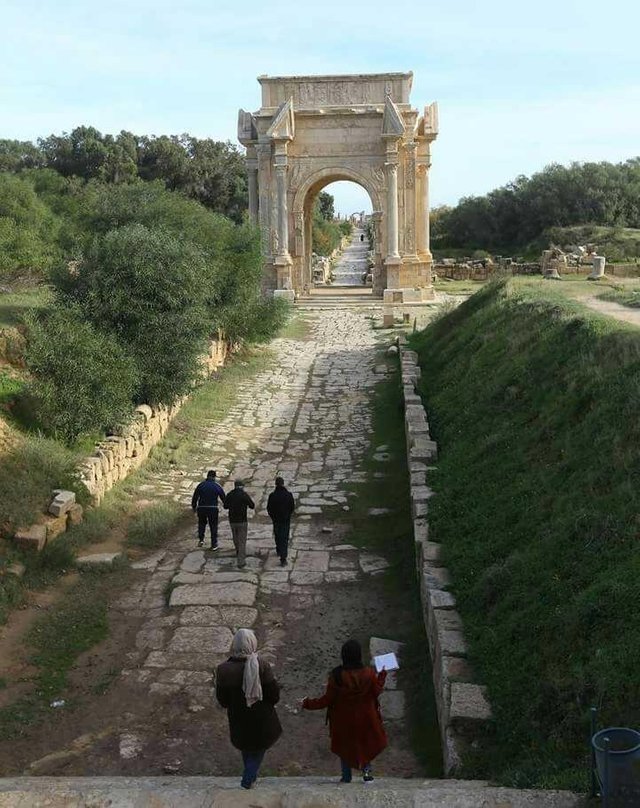
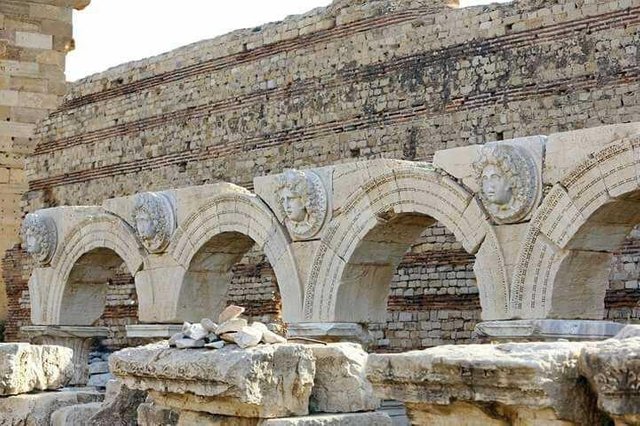
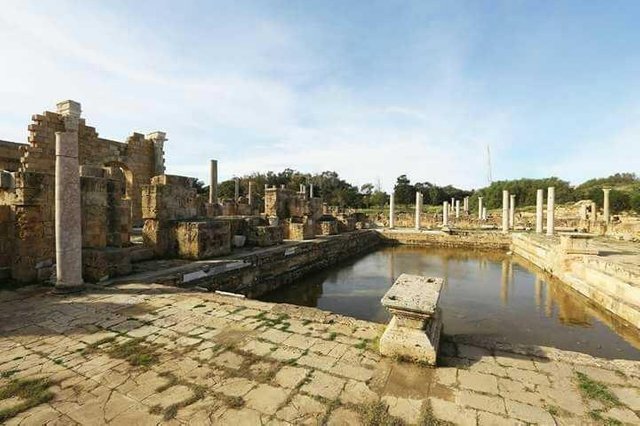
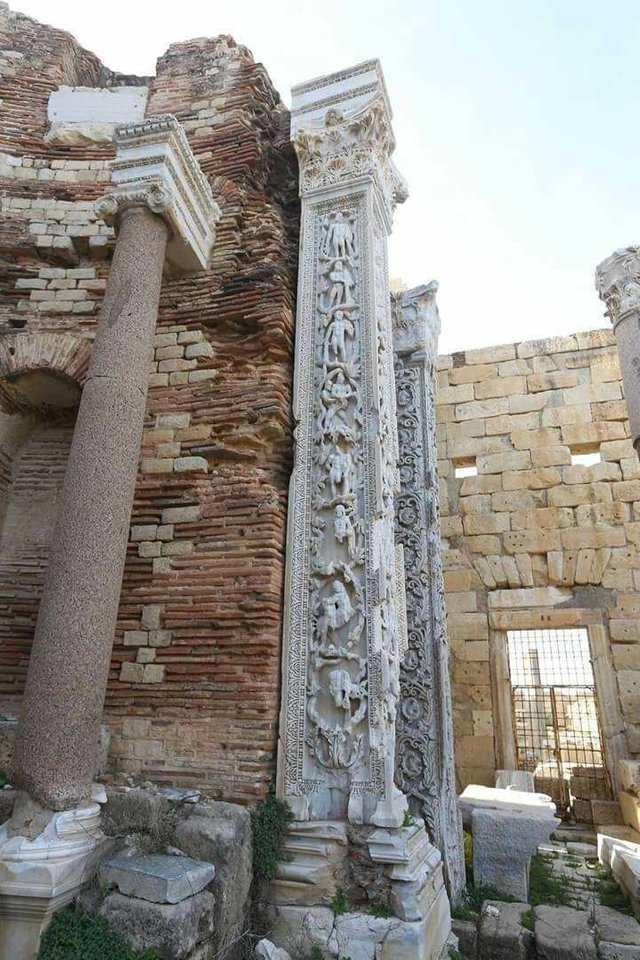
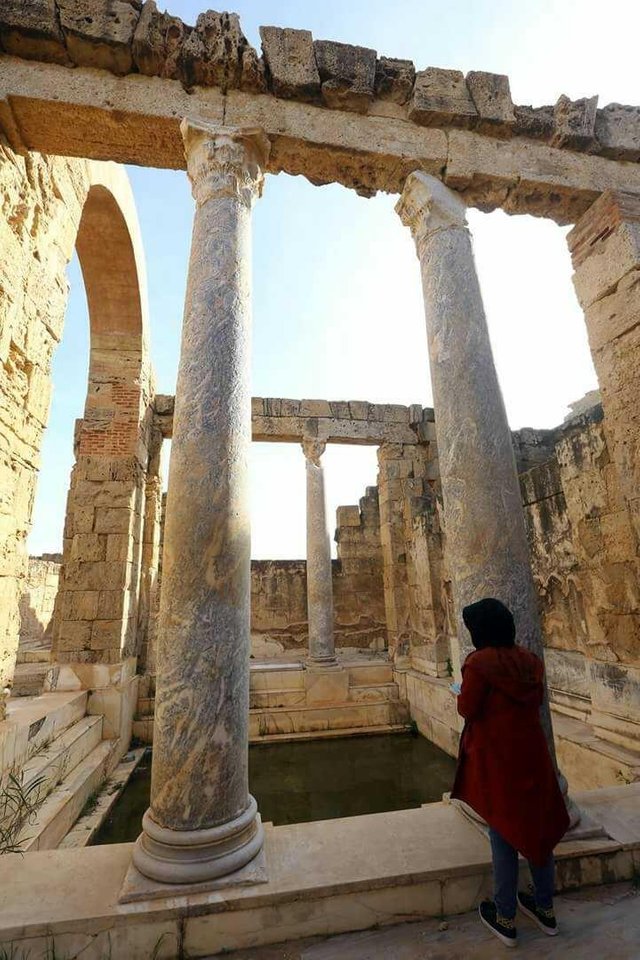
I hope this post can add to our knowledge of all, which certainly hopefully can be useful. It would be nice to share our knowledge and add insight into the science of history.
Until here I end the post, I hope you are happy. With this I @arnoldmark say to meet again in my next post, thank you.
Don't forget to upvote and resteem.
Very nice article you have there! But do not forget to cite your sources and credit your images when necessary
Downvoting a post can decrease pending rewards and make it less visible. Common reasons:
Submit
yea friend, your suggestion is correct, thanks for your suggestion.
Downvoting a post can decrease pending rewards and make it less visible. Common reasons:
Submit